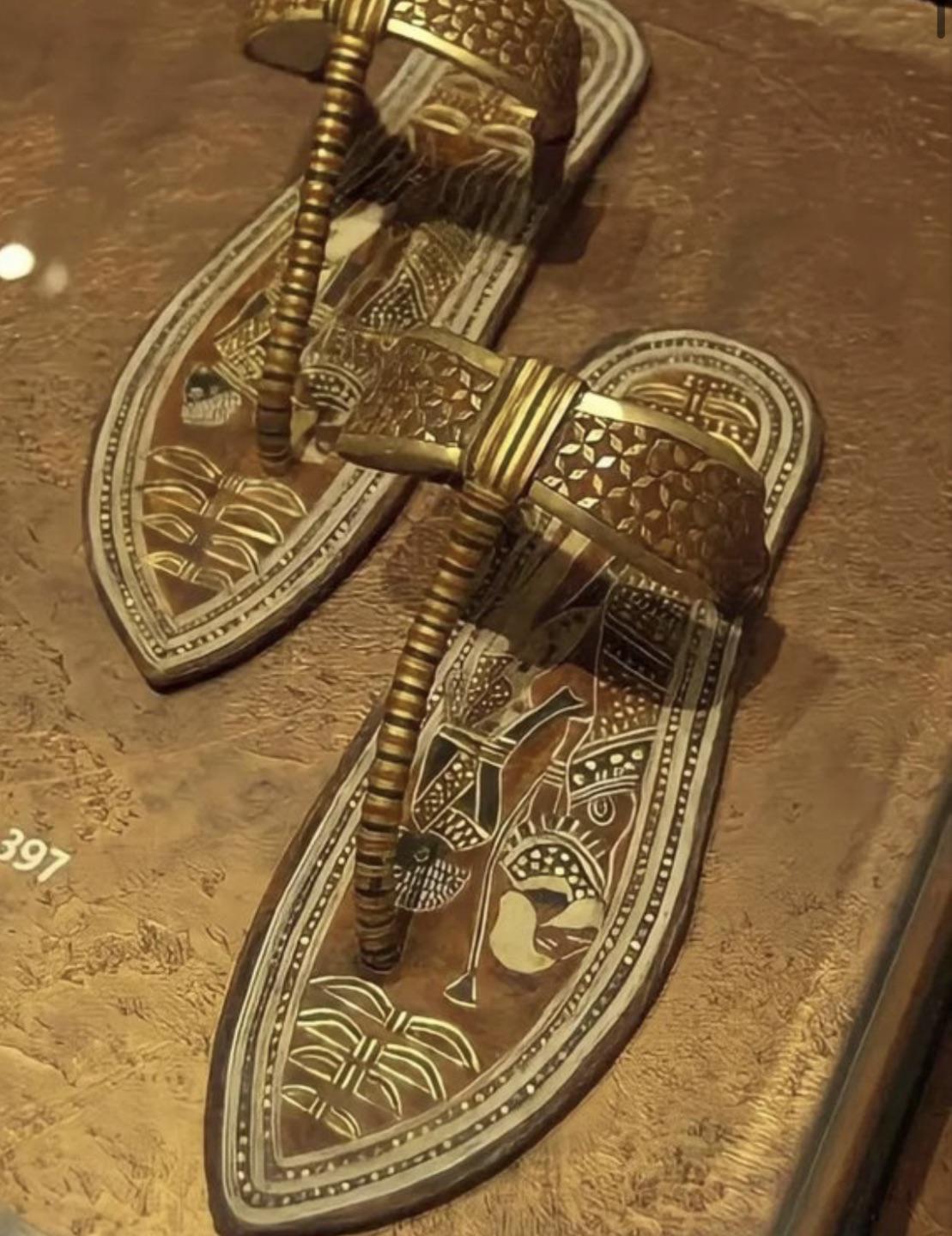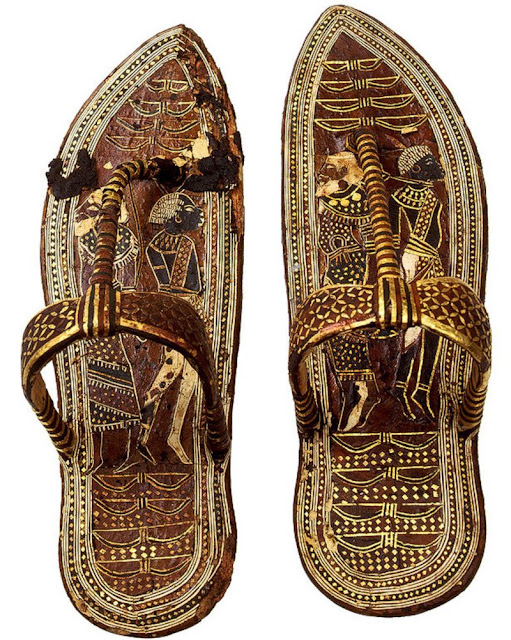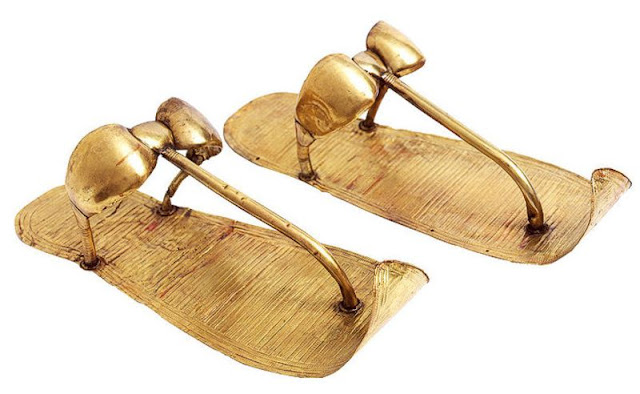The 3,300-year-old sandals worn by the Egyptian pharaoh Tutankhamun

The discovery of Egyptian Pharaoh Tutankhamun’s 3,300-year-old sandals represents a remarkable link to ancient history, providing insights into the footwear and lifestyle of one of Egypt’s most iconic rulers. Tutankhamun, often referred to as King Tut, ascended to the throne at a young age and ruled during the 18th dynasty of the New Kingdom period, around 1332–1323 BCE.

The sandals, found in Tutankhamun’s tomb in the Valley of the Kings near Luxor, Egypt, offer a tangible connection to the life and reign of the young pharaoh. Their preservation over millennia is a testament to the meticulous craftsmanship of ancient Egyptian artisans and the unique conditions of the tomb.
Made from a variety of materials including leather, plant fibers, and gold, Tutankhamun’s sandals were not merely functional footwear but also symbols of status and power. The use of gold in their construction reflects the pharaoh’s royal lineage and divine authority, as gold was associated with the gods and the afterlife in ancient Egyptian culture.

The design of the sandals provides clues about the fashion and practical considerations of the time. They feature intricate patterns and embellishments, demonstrating the skill of ancient Egyptian shoemakers. The sandals were likely tailored to fit Tutankhamun’s feet precisely, ensuring both comfort and elegance.
Examining Tutankhamun’s sandals also offers insights into the daily life and activities of ancient Egyptian royalty. The presence of wear and tear on the soles suggests that the pharaoh wore these sandals regularly, perhaps during religious ceremonies, formal events, or leisurely walks in the palace gardens. Studying the sandals in conjunction with other artifacts found in Tutankhamun’s tomb can provide a more comprehensive understanding of his lifestyle and activities.
The discovery of Tutankhamun’s sandals continues to captivate archaeologists, historians, and the public alike. Each artifact from the pharaoh’s tomb adds to the puzzle of ancient Egyptian history, allowing researchers to piece together the complex tapestry of this ancient civilization. Moreover, Tutankhamun’s tomb is renowned for its remarkable preservation, providing a wealth of information about ancient Egyptian culture, religion, and society.

Tutankhamun’s reign was relatively short, and he was largely overshadowed by his more illustrious predecessors. However, the discovery of his tomb in 1922 by British archaeologist Howard Carter sparked global interest in ancient Egypt and cemented Tutankhamun’s place in history. The artifacts found in his tomb, including the sandals, have since become symbols of ancient Egyptian civilization and are exhibited in museums around the world, allowing millions of people to marvel at their beauty and craftsmanship.
In conclusion, Egyptian Pharaoh Tutankhamun’s 3,300-year-old sandals represent more than just footwear; they are windows into the world of ancient Egypt and the life of one of its most famous rulers. Their discovery and preservation provide valuable insights into ancient Egyptian culture, craftsmanship, and daily life, enriching our understanding of this fascinating civilization. As symbols of royal power and divine authority, Tutankhamun’s sandals continue to captivate and inspire generations, serving as enduring reminders of Egypt’s rich and storied past.